Very impressed with Takalvans Bundaberg! From the initial enquiry through to handover of our van purchase, nothing but professional, friendly, informative service! Special thanks to Terry and Justin, much appreciated.
- Pat Muddle via Google
Give us a call (07) 4151 1621
Ah, the open road! There's something incredibly freeing about taking your home on wheels plus the family and exploring the natural beauty Australia has to offer. If you're considering getting a family caravan, there are a ton of factors to take into account—from the practical details to the luxuries that'll make your road journey a home away from home. In this ultimate guide, we'll walk you through all you need to know about buying and then using your family caravan to make it a roaring success.
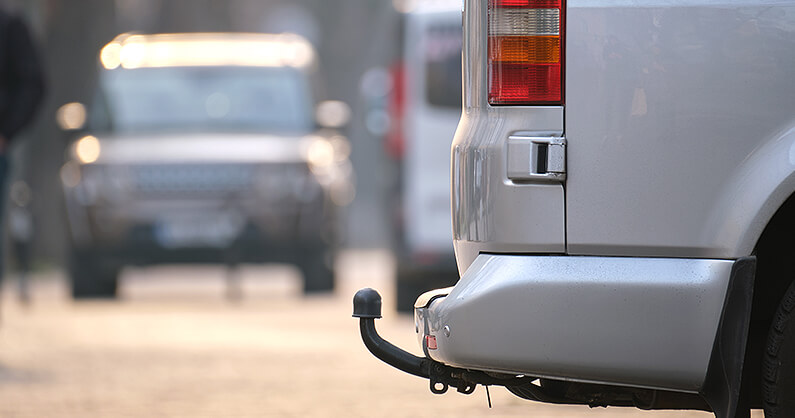
The first thing to check before falling in love with a caravan is whether your car can actually tow it. Generally, cars have a "Gross Train Weight" or a "Gross Combined Weight Rating (GCWR)" that specifies the total weight of the car and the caravan it can safely handle.
Vehicle Owner's Manual: The first place to check is your vehicle's owner's manual. This will typically list the GTW, GCWR, and towing capacity.
Manufacturer's Website: If you can't find the information in the manual or you don't have it, the manufacturer's website is a great resource. You can usually find this information under the technical specifications section for your vehicle model.
Consult the Dealership: Your local car dealer should have all this information readily available. If you’re considering buying a new car along with a caravan, the dealer can guide you to a model that fits your needs.
Independent Experts: There are services and towing experts that can provide you a detailed breakdown of what your vehicle can handle.
Here's how to calculate if your car can handle a particular caravan:
Even if your vehicle's ratings say you can tow a certain weight, experts often recommend using only 80-90% of that capacity. This provides a safety buffer, which can be especially handy for novice towers or for those planning to drive in challenging conditions like steep hills or windy terrains.
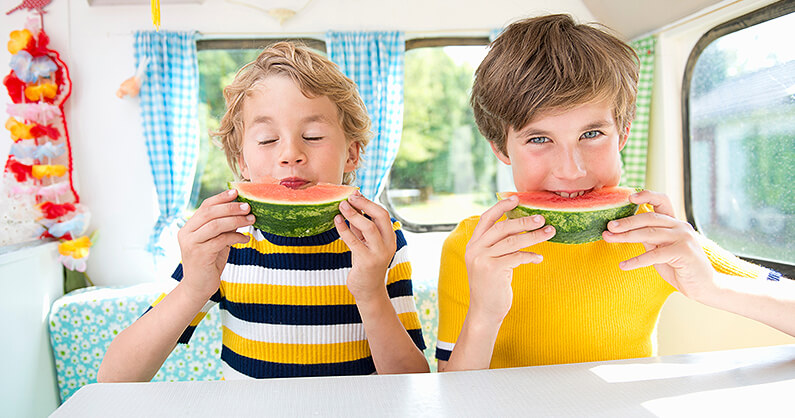
Your family caravan layout is something to really consider. Especially when it comes to sleep, hanging out and cooking. What we want is to find something that will work really well even if it is not 100% perfect as perfection can be hard to come by. Everybody needs slightly different things.
How many beds do you need, and what type? Do you have little ones that will go to bed early? Older kids that need their space?
Some families are fine with convertible dinettes that turn into beds, while others may want fixed bunks for the kids and a separate master bed for the parents.
Consider whether the beds are easy to set up and put away if they are convertible.
How much communal space do you need? If you have small children, you might want extra floor area where they can play. Older kids and adults might appreciate a dedicated seating area where they can read, play games, or watch TV.
Can people be outside under an awning instead of inside?
If you plan on cooking most of your meals, you'll need a well-equipped kitchen.
Do you need:
Some families are fine with using campsite facilities, while others prefer to have a bathroom onboard. What is right for you may depend on the age of your kids and how many you have. No one really likes walking to the bathroom in the middle of the night.
If you opt to have a toilet in your caravan, consider the size and layout. A combined shower and toilet are space-saving but less comfortable. Separate facilities offer more comfort but take up more space.
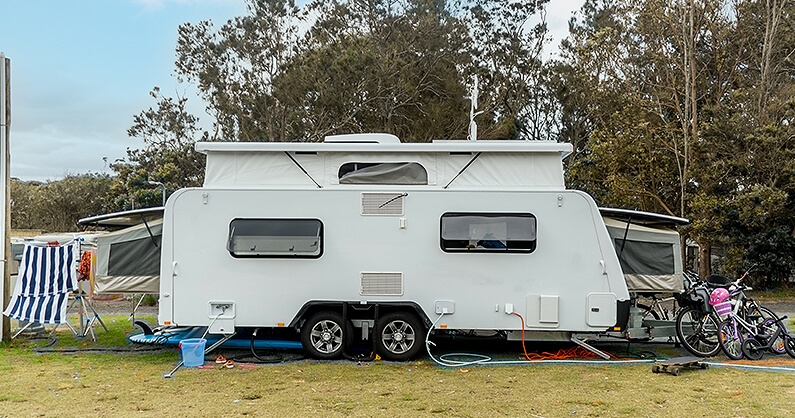
From camping gear to kids' toys, the amount of storage you need can quickly add up. Choose a caravan with enough storage compartments for clothes, cooking equipment, and leisure items. Some caravans even come with external storage solutions like bike racks.
Let’s figure out how much you need.
Make a list of all the types of items you'll be taking with you. Here are some categories to consider:
Different caravans have different options when it comes to storage. Here is what you can typically find:
When looking for family caravans for sale, understanding how much storage you need will help you to sort which van is right for you.
Safety is a priority when it comes to the family. Modern caravans come with features such as:
If you are looking at used family caravans, be sure you can add these if they are not there now.
Also, consider additional safety options for transporting your caravan like a stabilizing hitch or anti-sway bars to make towing easier and safer.
If you plan to explore various types of terrains, you'll want a caravan that is flexible enough to handle both the seaside and rougher outback roads. Some caravans come with adjustable suspension systems, allowing you to tailor your ride depending on where you are.
Here are some things to consider.
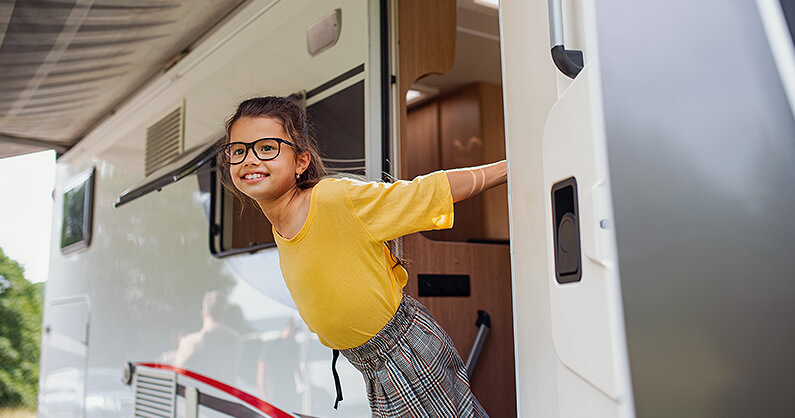
Make note of where you want to be able to travel with your caravan and potentially how big those location priorities are. Do you want your caravan to go to:
Flexibility is also about how easy the caravan is to tow. Smaller, lightweight models may offer greater maneuverability, making it easier to navigate through tight spots or winding roads. On the flip side, larger caravans might offer more amenities and space but could be more challenging to tow and set up.
Having an idea of where you want to travel can help you define how important moving your caravan around is.
Climate and weather are another area worth considering.
Do you want to use your family caravan in cold winter weather and need heating?
What about hot summer weather? Do you want the option of air conditioning? Will you want or need fans installed? Or could you just bring a fan along and plug it in?
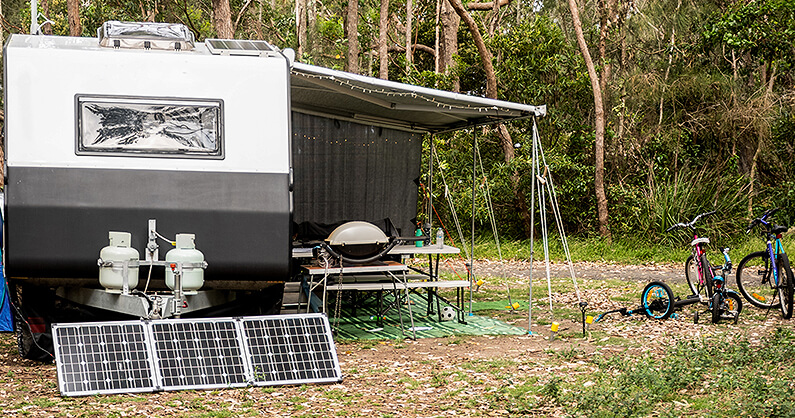
Some people like staying at well-equipped caravan parks, while others prefer the solitude of off-grid camping. If you're in the latter category, look for caravans with features like:
If using solar power for your caravan is one of your goals, you’ll want to calculate how much solar power you need and know what appliances you will have in your caravan.
There are different types of caravans to choose from, such as traditional caravans, pop-tops, and expandables. The best type for your family depends on your specific needs. If you're a newbie, you might start with something smaller and easier to manage, then upgrade as you get more comfortable.
Let's explore some of the key caravan types and what they have to offer.
Pros: Traditional caravans are often fully equipped with a range of amenities such as a kitchen, bathroom, and fixed beds. They are robust and offer plenty of internal space.
Cons: On the downside, they are generally heavier and might be a bit overwhelming for beginners to tow and park. They're also not as versatile when it comes to handling rough terrains.
Best For: Those who are looking for a more "home-like" experience and have a vehicle capable of towing a heavier load.
Pros: Pop-top caravans feature a retractable roof, which gives you the best of both worlds: a compact size for easy towing and increased headroom when you're parked. The reduced height when traveling also means better fuel efficiency.
Cons: The canvas sides may not offer as much insulation, making this type less ideal for extreme weather conditions. Additionally, setting up the pop-top can take a bit more time.
Best For: Couples or smaller families who prioritise ease of towing and fuel efficiency but still want some extra space when parked.
Pros: Expandables offer a hybrid between a traditional caravan and a pop-top. The ends can fold or slide out
to create extra sleeping spaces, making them ideal for larger families. When closed, they are relatively easy to
tow.
Cons: Expandable sections are often made of canvas, which can reduce insulation. Also, setting up the
expandable sections can take some time and effort.
Best For: Larger families who need extra sleeping space but still want something relatively easy to tow.
Note: we don't currently carry these.
Pros: These are compact, lightweight, and extremely easy to tow. Ideal for weekend getaways, they often have basic amenities like a bed and some storage space.
Cons: They are usually only suitable for one or two people and offer minimal amenities.
Best For: Solo travellers or couples with one small child who are new to caravanning and prefer shorter trips.
Note: we don't currently carry these.
Caravans come in a wide range of prices, from budget options to luxury models. Now that you have an idea of layout, style, storage, flexibility, style and how heavy your caravan can be, let's get down to costs.
Budget models generally start at around $50,000 but used family caravans can be cheaper. They are well-suited for newcomers to the caravanning world or those who don't plan to travel for extended periods. While they may lack some of the bells and whistles of more expensive models, many budget caravans still offer solid features like basic kitchen amenities, a comfortable sleeping area, and essential safety features.
Mid-range models usually fall between $70,000 and $100,000 and offer a good balance of comfort and functionality. These caravans often include features like enhanced storage, more sophisticated kitchen appliances, and sometimes even extras like air conditioning or solar panels.
Luxury models can go beyond $100,000 and offer top-of-the-line features, such as leather interiors and high-tech entertainment systems. They are designed for those who want a premium experience and are willing to invest in high-quality amenities and additional comforts.
New caravans come with the latest features, full warranties, and the peace of mind that you are the first owner. However, like a new car, new caravans depreciate the moment you take them off the lot.
Used caravans offer a more budget-friendly option, but come with the risk of wear and tear or hidden defects. It's essential to inspect used models thoroughly, ideally by bringing along an experienced caravaner or a professional to check for potential issues. Also, be sure to inquire about service history and any previous repairs. Our used caravan guide can help you if you are looking at buying a used caravan.
Don't forget to account for additional costs such as:
Taking the time to understand your price range can help you make a more informed decision, ensuring that your new caravan not only meets your needs but also fits within your financial limits. With some careful planning and budgeting, you'll be enjoying your dream caravan holiday before you know it!
Let’s sum up what you need to know and keep track of when looking for family caravans for sale:
Sleeps 2 and seats 4. Has A/C, large ensuite, 2-door fridge and more. Learn more about the New Age Big Red.
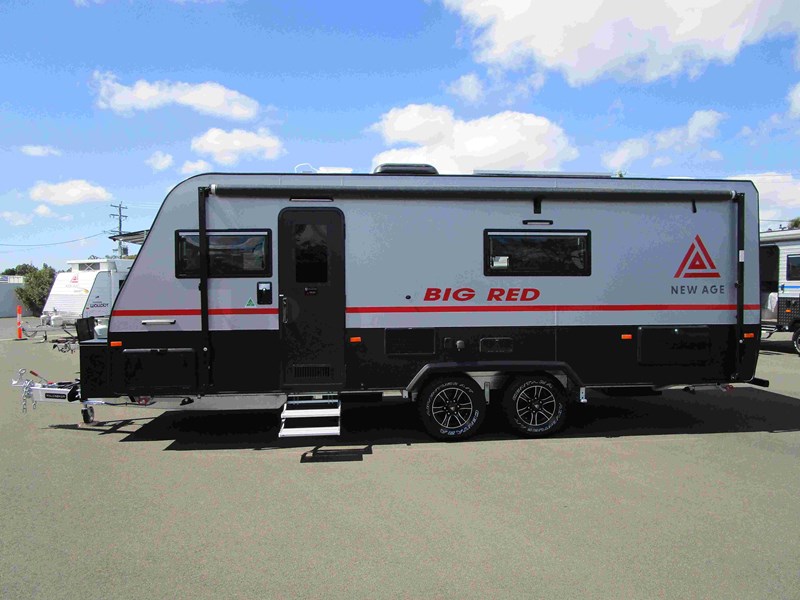
Sleeps 6, has A/C, toilet & shower with dinette and bed conversion. Learn more about the New Age Road Owl.
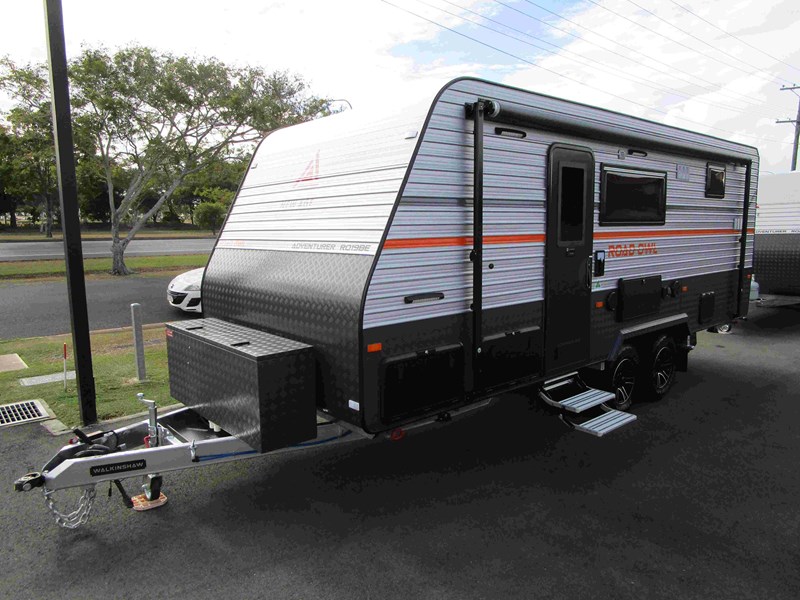
You can take a look at our new and used caravans to see if we have something that checks all the boxes for you. If we haven’t covered something you still have questions on, contact us and we can help you further.
The Ultimate caravaning checklist
Top 10 Q&A's and buyer tips, to help ensure your caravaning experience is an ultimate success.